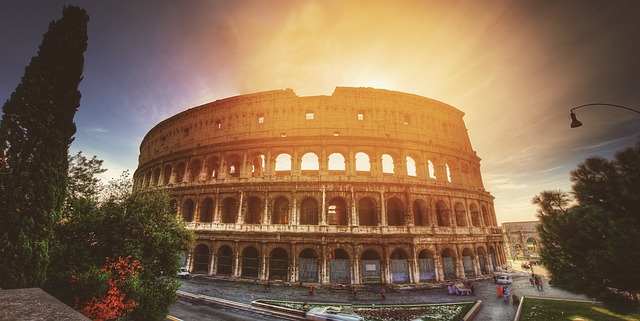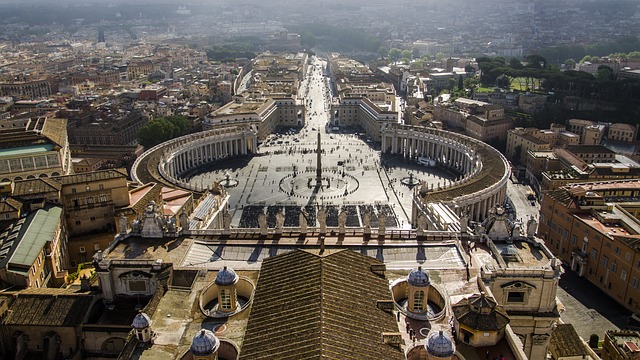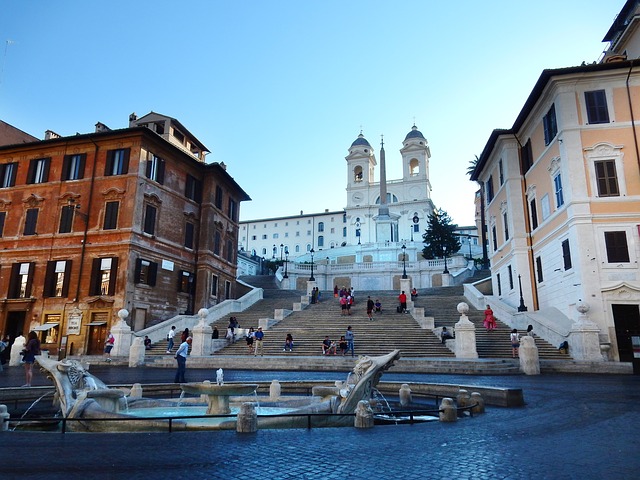In This Article, We will Discus about 11 best Holiday Places to visit In Rome Italy in the Year of 2018-19. In Rome Italy, we Can find Some Amount Of top-level Tourist Attraction And Holiday places Like Vatican City, The Pantheon, And Roman Forums ETC
In a city so stacked up with images of the time long past occasions and the Christian certainty, it's hard to know where to go first. Clearly, your own favorable circumstances will direct your choices, yet there are certain regions that are generally required turning points of Italy and of all Europe, for instance, the Colosseum and the Pantheon.
A statement of alarm, endeavor to vary your experiences as you explore Rome, so you don't visit such countless regions or sacred places sequentially. Besides, mix these more certifiable attractions with a very few that are simply guest images - the Spanish Steps and that place all vacationers must go to flip in their coin, the Trevi Fountain. Rome is huge to the point that it can overwhelm, so even the most dedicated vacationer should set aside some chance to kick back and acknowledge la dolce vita in a diversion focus or walkway bistro.
Rome Italy - The Colosseum and the Arch of Constantine
As the Eiffel Tower is to Paris, the outline of the Flavian Amphitheater is to Rome. The biggest structure left to us by Roman vestige, the Colosseum still gives the model to sports fields - present-day football stadium configuration is obviously founded on this oval Roman arrangement. The building was started by Vespasian in AD 72, and after his child, Titus extended it by including the fourth story, it was introduced in the year AD 80 with a progression of impressive recreations. The Colosseum was sufficiently vast for showy exhibitions, celebrations, bazaars, or amusements, which the Imperial Court and high authorities viewed from the most reduced level, blue-blooded Roman families on the second, the masses on the third and fourth.
By the Colosseum stands the comparatively understood Arch of Constantine, a triumphal bend raised by the Senate to regard the head as "liberator of the city and carrier of peace" after his triumph in the conflict of the Milvian Bridge in 312. Lines are long and move step by step so you can save time by joining the Skip the Line, Ancient Rome, and Colosseum Half-Day Walking Tour and have a scholarly guide, as well.
1. Rome Italy -Vatican City
The Vatican City is the littlest free state on the planet, with a region of not as much as a large portion of a square kilometer, its vast majority encased by the Vatican city dividers. Inside are the Vatican city royal residence and patio nurseries, St. Dwindle's Basilica, and St. Subside's Square, a territory led by the Pope, preeminent leader of the Roman Catholic Church. This smaller space offers much for voyagers to see, between its exhibition halls and the considerable basilica itself. Best Hotel Deal in Vatican City
Inside St. Dwindle's Basilica is Michelangelo's magnum opus, Pieta, alongside statuary and sacrificial tables by Bernini and others. The unchallenged feature of the Vatican City exhibition halls is the Sistine Chapel, whose heavenly frescoed roof is Michelangelo's most acclaimed work. Inside the Vatican city, Palace is the Raphael Rooms, the Borgia Apartments, the Vatican city Library, and various exhibition halls that incorporate the Picture Gallery, Museum of Secular Art, Etruscan Museum, and others. The accumulations you can find in these cover everything from ecclesiastical mentors to twentieth-century workmanship reflecting religious subjects.
Ticket lines for the Vatican's best attractions are extraordinarily long, and you can spend a few hours holding up in line. To spare time, buy a Skip the Line, Vatican city Museums with St. Peter's, Sistine Chapel, and Small-Group Upgrade visit ahead of time. This three-hour visit enables you to sidestep the long queues and walk straight into the exhibition halls with an educated guide. Headsets are given, and you can look over a few changed takeoff times or move up to a night or little gathering visit.
2. Rome Italy - The Pantheon
The Pantheon - the best-protected landmark of Roman vestige - is amazingly flawless for its 2000 years. This is in spite of the way that Pope Gregory III evacuated the overlaid bronze rooftop tiles, and Pope Urban VIII arranged its bronze rooftop stripped and liquefied down to cast the covering over the holy place in St. Subside's and guns for Castel Sant'Angelo. The Pantheon was modified after harming by the flame in AD 80, and the subsequent brickwork demonstrates the exceptionally high specialized dominance of Roman manufacturers. Its 43-meter vault, the preeminent accomplishment of Roman inside engineering, balances suspended without obvious backings - these are well covered up inside the dividers - and its nine-meter focal opening is the building's solitary light source. The amicable impact of the inside is an aftereffect of its extents, the tallness is the equivalent as the width. In spite of the fact that the main Christian rulers prohibited utilizing this agnostic sanctuary for love, in 609 Pope Boniface IV devoted it to the Virgin and all the Christian saints, and from that point forward, it has turned into the entombment place of Italian rulers (Victor Emmanuel II is in the second specialty on the right) and different well known Italians, including the painter Raphael.
3. Rome Italy - Roman Forum
Strolling through the gathering, now amidst a throbbing current city, resembles venturing back two centuries into the core of antiquated Rome. Despite the fact that what makes due of this focal point of Roman life and government demonstrates just a little division of its unique wonder, the standing and fallen segments, its triumphal curves, and stays of its dividers still inspire, particularly when you think about that for quite a long time, the historical backdrop of the Forum was the historical backdrop of the Roman Empire and of the western world. Roman political and religious life was focused here, alongside the courts, markets, and meeting places. After the seventh century, the structures fell into destroying, and houses of worship and fortifications were worked in the midst of the antiquated remains. Its stones were quarried for different structures and it was not until the eighteenth and nineteenth hundreds of years that orderly unearthings exposed the antiquated structures from under a 10-meter layer of earth and rubble. Features not to miss are the Temple of Antoninus Pius, the Temple of Castor and Pollux, the Temple of Saturn, the Arch of Septimus Severus, the Curia, the Temple of Vesta, and the Arch of Titus.
4. Rome Italy - Trevi Fountain
One of the city's most mainstream vacation spots, this seventeenth-century perfect work of art has been deified in movies until the point when it is right around a required visit. Tossing a coin (not three) into the Trevi Fountain (Fontana di Trevi) is a custom that gathered guarantee your arrival to Rome. Rome's biggest wellspring, Fontana di Trevi is provided by a reservoir conduit initially built by Agrippa, the immense workmanship benefactor of the principal century BC, to convey water to his showers. The wellspring was made for Pope Clement XII somewhere in the range of 1732 and 1751 by Nicolò Salvi and worked against the back mass of the royal residence of the Dukes of Poli. It portrays the ocean god Oceanus (Neptune), with ponies, tritons, and shells. The water twirls around the figures and the fake shakes and gathers in a huge bowl, constantly loaded up with coins.
5. Rome Italy - Basilica of St. John Lateran
As you may expect for the Episcopal Church of the Pope, St. John Lateran is one of Rome's most great houses of worship. Following quite a while of adjustments, despite everything, it holds its unique shape from the time of Constantine, when it was manufactured. Its façade, by difference, is an absolutely elaborate adornment and a fine case of that period. Alongside the mosaics in the apse, make sure to see the lovely sixteenth-century wooden roof. On the off chance that the octagonal baptistery, San Giovanni in Fonte, looks somewhat natural, this is on account of it gave the model to later ones all through Europe. Worked by Constantine, it is the world's most seasoned Christian baptistery. Over the piazza, in the congregation of the Scala Santa, is the Holy Staircase, 28 stages accepted to have been conveyed to Rome in the fourth century by St. Helen, from Pilate's royal residence in Jerusalem.
6. Rome Italy -Centro Storico and the Spanish Steps
Investigate a Rome travel guide, and you'll see one region so loaded up with activities that it's difficult to peruse the road names. This is the Centro Storico, the notable focus of Rome, with such huge numbers of craftsmanship filled holy places, shining castles, and enthusiastic squares that you could spend your entire get-away walking its antiquated boulevards and paths. Invest some energy just to assimilate the area's air as opposed to going from one of its must-see sights to the following. Alongside Piazza Navona, the Trevi Fountain, and the Basilica of Santa Maria Maggiore, stop in less notable houses of worship, for example, Santa Maria del Popolo, where you'll discover works by Bernini and Caravaggio.
Respite at the Spanish Steps, the trip of unpredictable stairs and arrivals that pave the way to the French church of Trinità dei Monti. The stairs take their name from Piazza di Spagna, the court at their base and one of Rome's most average squares. The stairs have been a most loved frequent of sightseers, where they can sit and appreciate a gelato in the late spring or warm their hands around cones of hot simmered chestnuts in the winter. The vessel molded wellspring at the foot of the Spanish Steps is known as the Barcaccia and was made by Pietro Bernini, father of the immense Baroque planner Gian Lorenzo Bernini. By means of Condotti, driving southwest from Piazza di Spagna is Rome's most elegant shopping road, where the Caffè Greco is acclaimed for the specialists, authors, and performers who have frequented it.
7. Rome Italy - Santa Clause Maria Maggiore
One of Rome's most grand houses of worship, Santa Maria Maggiore has remained here since the fourth-century Pope Liberius had a dream of the Virgin guiding him to construct a congregation where snow fell the next day. In spite of the fact that it was August, snow fell on the Esquiline slope the following morning, so here the immense basilica was assembled. The mass has been praised here consistently since the fifth century. The three paths of its 86-meter-long inside are isolated by 40 segments of marble and four of stone, and the apse included the thirteenth century is fixed with mosaics of Old and New Testament topics, perfect works of art of Rome's acclaimed mosaic craftsmen.
Rome's most established mosaics, as old as the fourth century, beautify the upper dividers, and the floor is decorated with a hued stone in the style of the master twelfth-century craftsmen of the Lake Como area. The primary gold to achieve Italy from the Americas sparkles on the coffered roof. Two popes are covered here; it's one of Rome's four ecclesiastical basilicas, a vital place of journey church.
8. Rome Italy - Piazza Navona
One of Rome's most trademark Baroque squares, Piazza Navona still has the diagram of the Roman stadium worked here by Emperor Domitian. It was as yet utilized for celebrations and pony races amid the Middle Ages and was remade in the Baroque style by Borromini, who likewise outlined the superb arrangement of royal residences and the congregation of Sant'Agnese, on its west side. Its veneer, Campanile, and vault feature the manner in which Baroque engineering weaves arched and sunken surfaces, peaks, windows, sections, and docks into a bound together plan. In the tomb of Sant'Agnese is Alessandro Algardi's 1653 The Miracle of St. Agnes and the remaining parts of a Roman mosaic floor. Sant'Agnese gave a model to Baroque and Rococo holy places in Italy and somewhere else.
Despite the fact that Borromini composed the square and its encompassing exteriors, it was his archrival, Bernini, who made its highlight, the lovely Baroque wellspring, Fontana dei Fiumi. The vivacious wellspring speaks to the four waterways at that point thought to be the biggest on every one of the known mainlands, with figures representing the Nile, Ganges, Danube, and Rio de la Plata around the vast bowl, each joined by plants and creatures of their particular areas. The two different wellsprings in the square are the sixteenth century Fontana del Moro before the Palazzo Pamphili, raised by Giacomo Della Porta, and the nineteenth century Fontana del Nettuno with its figure of Neptune. Today, the square is loaded up with Romans, sightseers, road craftsmen, trinket stands, bistros, and amid December, one of Rome's best Christmas markets. Close-by, between the Piazza and the Pantheon, the congregation of San Luigi dei Francesi contains three noteworthy works of art via Caravaggio from the late sixteenth century.
9. Rome Italy - Palatine Hill
Deliberately set 50 meters over the Tiber, the Palatine Hill demonstrates proof of Rome's most punctual settlement, shake cuttings found before the Temple of Cybele indicate human movement as long back as the ninth century BC. Afterward, this was the site picked by the rulers and awesome blue-blooded families for their royal residences. The Farnese Gardens were spread out on the slope in the sixteenth century for Cardinal Alessandro Farnese, a delight stop of porches, structures, yards, flowerbeds, trees, and wellsprings composed as a sort of stage-setting for parties. Features of the Palatine Hill are the House of Livia (Augustus' better half), the semi-underground Cryptoporticus, Domus Flavia, Domus Augustana, and most forcing of every one of, the Baths of Septimius Severus. The Palatine Hill is a flawless place to investigate, joining a recreation center with glorious and noteworthy remains of old Rome.
10. Rome Italy - Borghese Gallery and Gardens
One of Rome's biggest parks, the Borghese Gardens contain various attractions that incorporate two historical centers, the most conspicuous of which is the Villa Borghese. Worked as a gathering manor and to house the Borghese craftsmanship accumulation, the exhibition contains depictions, figures, mosaics, and reliefs, most from the fifteenth to the eighteenth century, and incorporate works by Raphael, Titian, Caravaggio, and Rubens. Somewhere else in the recreation center, Villa Giulia was worked as a mid-year home for the sixteenth century Pope Julius III and houses the Etruscan Museum. More manors are from the world composition that was held in Rome in 1911.
The recreation center is an English-style scene cultivate, with strolling ways and lakes where you can lease rowboats. You can likewise lease bicycles or a survey to investigate the recreation center. There is a decent zoo, Bioparco di Roma, with naturalized walled in areas and a smaller than usual trail associating its different segments. Some of its attractions will speak to youngsters, including play areas, end of the week horse rides, and incidental manikin appears.
11. Rome Italy - Showers of Caracalla
Finished via Caracalla in 216, these were considerably more than open showers. They were an entire game focus, with hot and cool showers, a swimming pool, dry and steam saunas, acrobatic and sports offices, social rooms, gardens, libraries, beauticians, and shops. The huge and forcing structure secured territory of 300 square meters, a complex of enormous lobbies whose arches and vaulting were bolstered by colossal segments and wharves. It could oblige 1,500 individuals at any given moment. The floors and dividers were secured with marbles, mosaics, and frescoes; even in destroying their quality is as yet clear.



















Great post . I want to visit from one place to another place,
ReplyDeleteThanks for sharing